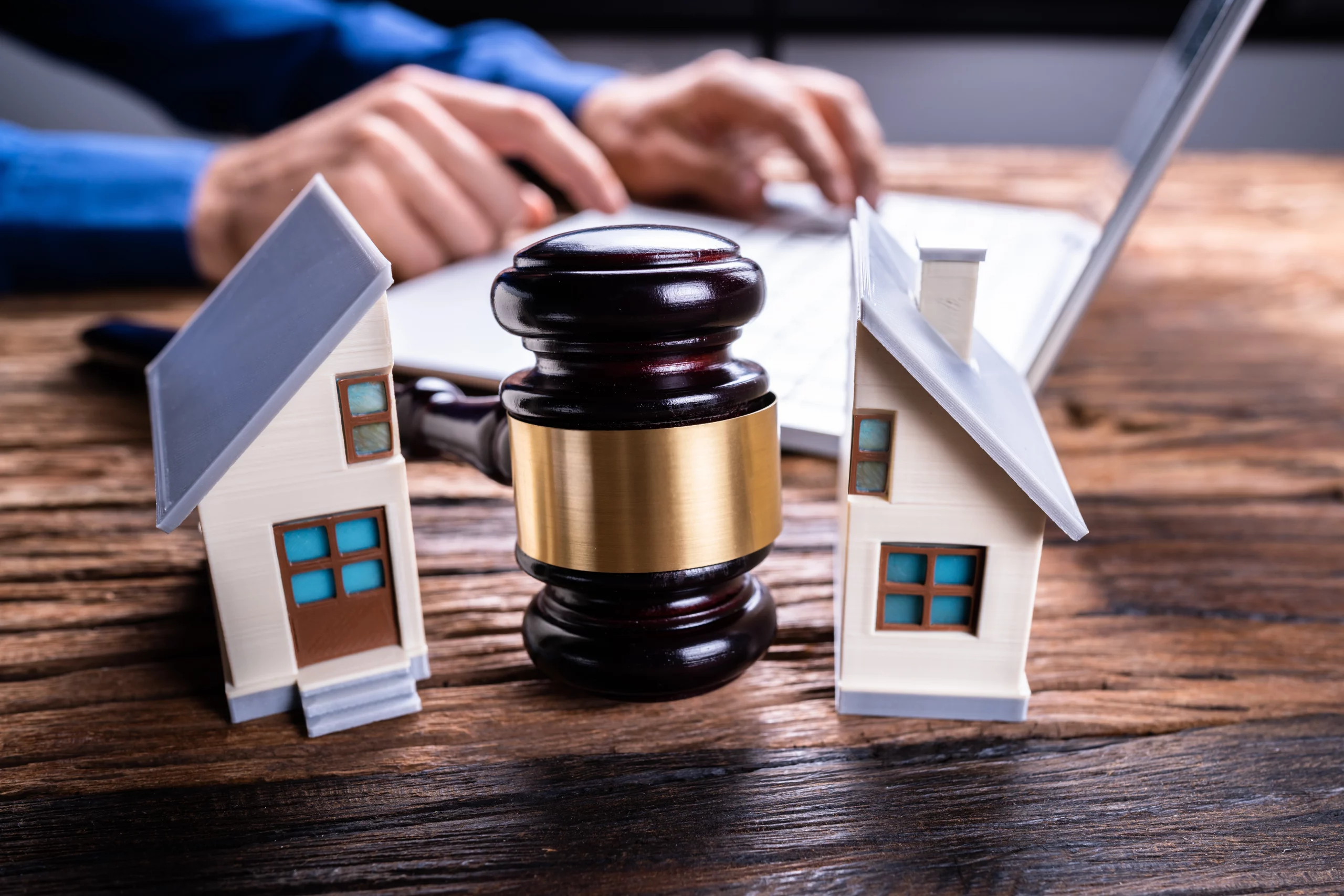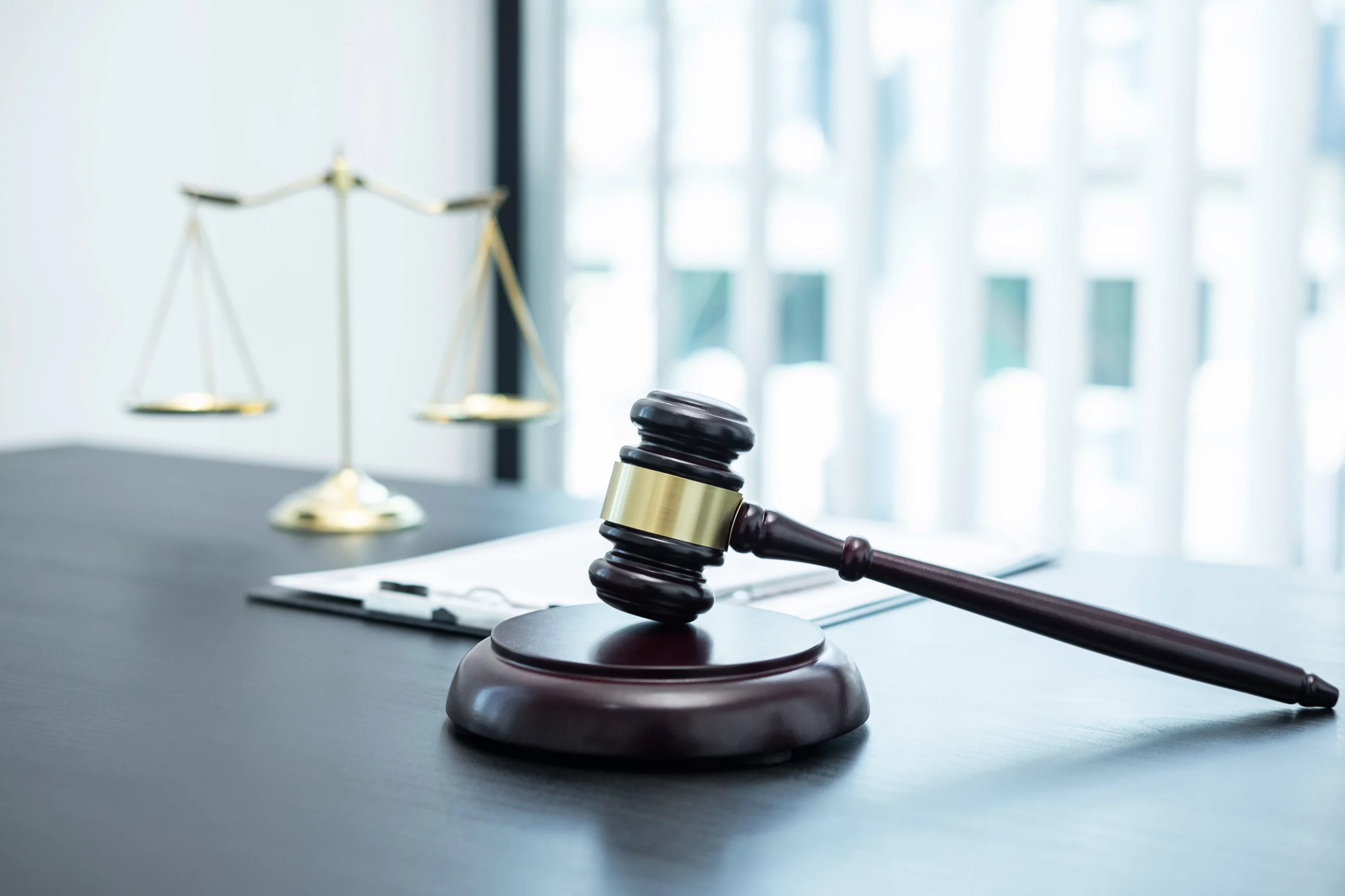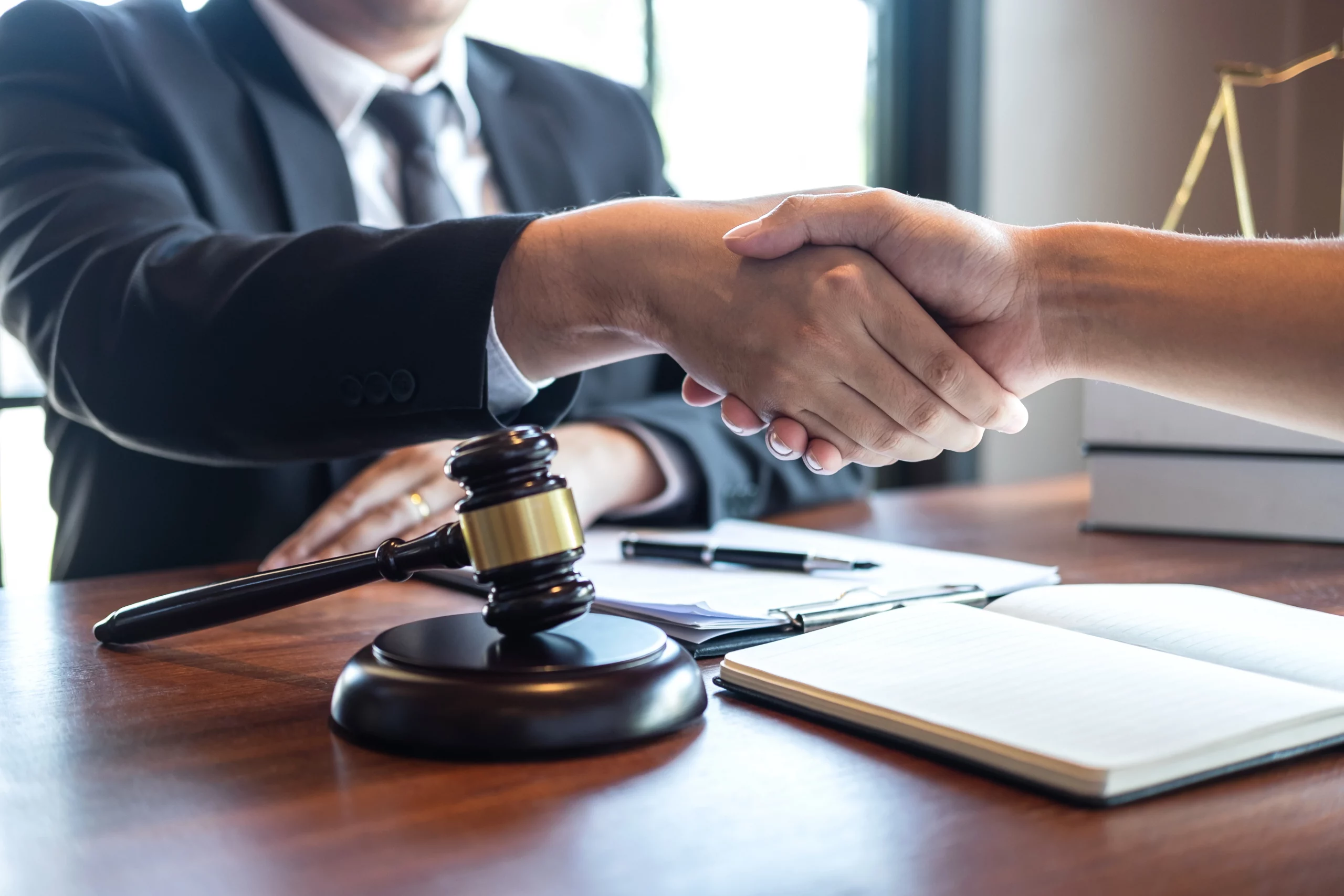What Kind of Lawyer Should you Hire for a Slip & Fall Accident?
Top Rated Premises Liability Law Firm
Premises Liability > Lawyer > What Type
Here is where you should begin to determine if you have a case and if it is worth it to file a claim.
At least once in our lives, we will experience the humiliation of falling to the ground after a slip or trip. These accidents are usually attributed to the person’s carelessness, inattention, or general clumsiness. However, there are times when people suffer injuries from such falls due to a hazard on private land.
There is no presumption of liability under the law for injuries sustained by trespassers on the property of others. However, there are situations in which business and residential property owners alike might be held responsible.
The following information is intended to assist those injured as a result of a trip and fall on the property of another in determining whether or not they have a valid personal injury claim for a trip and fall.
Free Consultation
NO FEE UNLESS WE WIN
IS THERE A HAZARDOUS SITUATION ON THE PREMISES?
A fall must have been caused by a hazardous condition on the property for the owner to be held responsible. Falling is not an acceptable excuse for damaging another person’s property. The accumulation of snow and ice, wet and slippery flooring and poorly-damaged pavement are all potentially hazardous situations.
- broken pavement
- trash
- other obstructions
In addition, the landowner must have brought about or allowed the hazardous situation to endure.
It’s crucial to remember that homeowners are under no obligation to ensure their properties are completely risk-free zones. It is simply required that they take reasonable precautions to ensure the safety of everyone who enters their land.
For instance, after a snowstorm, it is customary for property owners to remove snow and ice off public walkways. They are not obligated, however, to ensure that the sidewalks are completely dry and clear. As a result, a claim based on a slip and fall immediately following a snowstorm is highly unlikely to be successful.
HOW AWARE WAS THE LANDLORD?
Assuming the owner of a piece of property is unaware of a potentially hazardous situation, the owner will bear no responsibility for fixing it. Property owners should be given a reasonable amount of time to discover potentially hazardous circumstances.
If a child in a grocery shop drops a bunch of grapes on the floor and an adult slips and falls on them, the store owner is probably not responsible for the adult’s injuries.
Proving notice is often difficult in slip-and-fall cases. If the accident occurs on company premises, a report will be made. It is possible to learn how long a property owner had been aware of a hazardous condition that led to a fall by looking at the incident report.
There may also be security footage of the location where the fall occurred, revealing how long it took for the hazardous situation to be addressed. Incident reports and surveillance footage are typically important pieces of evidence to prove that a property owner was on notice of a dangerous condition on their land.
HAD ANY KIND OF WARNING BEEN DISPLAYED?
In most cases, if a property owner knows of a hazardous situation on their land but cannot fix it promptly, they must post a warning.
In the event of work on a public walkway, the local government is obligated to provide adequate warning to the public by erecting appropriate signage and/or cordoning off hazardous areas.
A store owner may be required to place “Caution” cones around freshly washed floors.
IT IS YOUR DUTY
If the tripping hazard was plain to see, the property owner is usually not liable for any injuries that result from the fall. For instance, if there is a gaping hole in the sidewalk, you should be able to spot it and move around it. Additionally, individuals must take reasonable precautions to safeguard against harming themselves.
If you can see that a slope is particularly steep and covered in ice on a very cold day, you should exercise caution and avoid it. Any personal injury claim you file could suffer damage if you are judged legally responsible for contributing to the cause of your injuries.
ALSO, TAKE INTO ACCOUNT
Before filing a claim, you should consider the extent of your injuries after a trip and fall. Filing a claim with a homeowner’s insurance provider can be time-consuming and frustrating.
You should probably initiate a lawsuit if you cannot reach an agreement with the insurance company over your claim. There are monetary and time costs associated with litigation.
You may also have to give a deposition, which is a time-consuming and stressful. Most legal proceedings are very trying.
Before making a claim or initiating a lawsuit, you should consider whether the injury justifies the trouble. A minor injury like a scraped knee or sprained ankle might not warrant the risk.
However, if the harm is severe enough to break an arm or cause spinal cord damage, it may be worthwhile to file a claim or a lawsuit.
Consult a lawyer who focuses on trip and fall cases if you were hurt in a fall on someone else’s property and think you may have a case. An accomplished attorney will be able to advise you on the applicability of any regional legislation and provide you with a rapid evaluation of the strength of your case.
CONDUCTING AN INQUIRY INTO A FALL THAT OCCURRED IN COLORADO
There isn’t a single person alive who hasn’t experienced a fall due to a tripping incident. These mishaps usually don’t cause major injuries because they stem from carelessness or clumsiness.
Unfortunately, injuries sustained from trips and falls can be quite severe; in some circumstances, they may even result in substantial long-term medical difficulties for the victims. According to the non-profit public safety organization National Safety Council, almost 9 million annual visits to emergency rooms are due to injuries incurred in trips and falls. Victims of such incidents frequently face exorbitant medical bills, intense pain and suffering, a period during which they cannot return to work, and the possibility of lifelong health problems due to their injuries.
To seek compensation for their injuries and related costs after a fall caused by another party’s carelessness,[2] victims of trip and fall accidents in Colorado can file a claim for personal injury. These claims often obtain compensation for economic and non-economic losses, and the amounts recovered can be substantial. As a result, anyone hurt in a slip and fall incident should see a Colorado Springs personal injury attorney without delay. Call the Warrior Personal Injury Lawyers at 719-300-1100 to speak with a lawyer for free about your case.
THE INVESTIGATION INTO PROVING NEGLIGENCE
To succeed in a personal injury claim, the injured party must prove that the defendant’s negligence was a proximate cause of the plaintiff’s harm. Although it may be easy to determine who was at fault for a trip and fall disaster in some situations, the responsible individual may dispute or deny responsibility in others. An attorney you choose will look into your case and gather proof of carelessness if it can be found. In most cases, the following elements are necessary to prove negligence after a trip and fall:
- If you fall on someone else’s business property, you should ask for and obtain an incident report. The report will often explain what went wrong and what was done to make the area safer following the incident.
- Conducting interviews with eyewitnesses – This step is sometimes required if people in the area at the time of the accident saw what happened. In a lawsuit involving a dispute over a trip and fall, witness testimony can be crucial.
- To prove that an unsafe environment caused your injury, your lawyer may request surveillance footage of the incident if it exists.
- Your lawyer may arrange for a physical inspection of the property where your accident occurred if they suspect a hazardous situation could lead to a trip-and-fall incident.
As assembling evidence in your favour can be a lengthy and complex legal process, victims should hire a lawyer with experience in trip and fall litigation. It’s also important for anyone who’s been in a fall to get checked out by a doctor. You should see a doctor to properly diagnose and treat any injuries. An official record can be created linking your injuries to the collision in which you were involved.
TAKE IMMEDIATE ACTION AND CONTACT A COLORADO SPRINGS ACCIDENT LAW FIRM TO DISCUSS YOUR CASE WITH AN EXPERIENCED LAWYER.
The law in the Colorado Springs area provides for substantial compensation for many people who are harmed in trip and fall accidents. Since victims of trips and falls may not always be aware that another party’s negligence caused their injury, they must get their case reviewed by a knowledgeable attorney. Warrior Personal Injury Lawyers has been assisting clients in obtaining compensation for injuries sustained in avoidable incidents since 2017. Call our office at 719-300-1100 to speak with one of our attorneys for free.
WHAT DO I NEED TO DO TO ESTABLISH NEGLIGENCE AFTER A SLIP AND FALL IN COLORADO?
TRIP AND FALL LIABILITY PROOF
According to the National Safety Council, about 9 million people in the United States visit the emergency department each year owing to injuries sustained in slip and fall accidents. Almost everyone has experienced a fall, and most have stumbled multiple times.
Some falls are the result of carelessness, but others result from hazards on other people’s property, such as wet flooring or obstacles that are difficult to avoid. Dangers are the results of these factors, and they can do much more harm than most people imagine.
Many fall victims received scraped knees, bruises, and other non-life-threatening injuries. The most common consequence of falling is a shame. On the other hand, some people get life-altering injuries in trips and falls.
You have a right to appropriate compensation if you have been injured due to a trip and fall and are beginning to incur medical bills and other damages due to the property owner’s negligence.
LOSSES SUSTAINED DUE TO THE CARELESSNESS OF HOMEOWNERS
When someone gets hurt on someone else’s property due to the owner’s carelessness, that’s when you file a premises liability lawsuit. The law requires proprietors to take reasonable precautions to ensure the safety of their guests.
Owners of commercial establishments, institutions of higher learning, governmental bodies, and private residences share this responsibility.
Accidents involving swimming pools, falling down stairs, exposure to dangerous chemicals, and other similar incidents are typical causes of premises liability claims. A trip and fall is the most prevalent event leading to a claim for premises liability. The following types of carelessness frequently lead to trips and falls:
- Liquid spills not being cleaned up
- insufficient illumination
- exposed wiring
- slick floors
- uneven surfaces
- cracks
- holes
- debris
- things in the way, and ripped or torn carpeting are all potential hazards.
A property owner’s obligation extends beyond the need to address unsafe situations to include the need to provide notice of those dangers to anybody who might be on the premises.
For instance, a worker at a grocery shop must post a sign advising customers of the potentially wet and slippery area until it dries after cleaning up an accident with water. The store should be held responsible for any costs associated with a customer’s injuries if a fall occurs because no warning sign was posted.
CARELESSNESS THAT LEADS TO A FALL
Slip and fall accidents cause thousands of injuries annually. Injuries sustained in these kinds of accidents are frequently severe, costing thousands of dollars, taking months or years to heal, and causing incalculable suffering to victims.
Determining liability after a fall can be complicated to add insult to injury. For this reason, it’s crucial to grasp certain ideas regarding the carelessness that can lead to a trip-and-fall mishap.
Negligence in a slip-and-fall case is determined by whether or not the property owner acted as a reasonable and sensible person would have. Landlords are legally obligated to make their properties fairly safe for their tenants and visitors by removing or repairing any risks that may exist there. The following are examples of such things:
In other words, how long did it take for the owner to become aware of and address the hazard that ultimately led to the accident?
To what extent did an unavoidable factor, such as a downpour in a parking lot contribute to the hazard?
Taking the Necessary Steps to Prevent and Analyze Incidents: Has the Property Owner Taken the Necessary Steps to Address the Hazard?
Would the installation of light or the placement of a sign by the property owner have been sufficient to avoid the incident?
However, the matter is not yet resolved because different parties bear varying responsibilities in cases of trip and fall negligence. This is because not everyone who enters a property has been asked to do so. This aspect of liability is defined by Colorado law, which divides trip-and-fall victims into three categories: invitee, licensee, and trespasser.
INVITEE
It’s not always easy to tell the difference between an invitee and the other types of attendees. The invitee can be broken down into two subtypes, public invitee and business invitee.
Anyone invited into the public property or private property intended for public use is considered a public invitee. A person in a public space like a park is an example of an invitee. A patient in a private hospital is also considered to be a public invitee because the hospital is available to the general public.
Since most trip and fall instances involve a business invitee, that person is the most likely to be the victim. These individuals have been extended an invitation to enter or remain at a location for reasons directly related to conducting business. These include trips to shops and malls, amusement parks, and hotels.
Colorado law provides the highest level of security for invitees of all types. This is because states place the highest responsibility of care on the host when guests are invited onto their land. Fixing problems, posting warnings, and keeping the premises in good repair all fall under this category of responsibilities. Depending on the specific circumstances, this may also include taking reasonable precautions to ensure the invitee’s safety on the premises in the state of Colorado.
LICENSEE
A licensee is on the property without the owner’s knowledge or permission and is not conducting business with the owner. Like the previous group, this one is typically broken down into invited and uninvited licensees.
Someone who is invited as a plus one to a party is an example of a licensee by invitation. An owner’s responsibilities toward this class of guests are identical to those toward invitees.
A licensee not invited to the premises, such as a group of teens throwing a party in the woods, does not enjoy the same legal rights. A property owner’s only obligation to trespassers is not intentionally harming them. This may involve doing things like setting traps.
TRESPASSER
A trespasser is someone who accesses another’s a property without permission or for an ulterior motive. Anything from idlers to thieves falls into this category. Similar to the case of the uninvited licensee above, these individuals are owed the same level of care.
INJURIES SUSTAINED FROM TRAPS AND FALLS
Determining whether negligence played a role in causing your trip and fall accident depends heavily on the individual facts of your case, which can vary from case to case. An expert Colorado slip-and-fall attorney can assess your case, provide advice on your possibilities of recovery, and assist you in gathering the evidence you need to win your case.
Injuries suffered by people who have tripped and fallen include, but are not limited to:
- Traumatic brain injurie
- lacerations
- dislocations
- spinal cord injuries,
- broken bones
- sprains
- strains
- concussions
- Other Injuries to Soft Tissues
Broken hips and other related injuries are particularly common among the elderly and can seriously affect their quality of life. After a serious fall, some seniors will need permanent assisted living because of the extensive rehabilitation they will need.
Other victims of trips and falls may need considerable medical treatment and be out of commission for a while, even if their injuries are not permanent.
RIGHT NOW, SPEAK WITH A PERSONAL INJURY ATTORNEY AT THE WARRIOR PERSONAL INJURY LAWYERS
If you have been injured in a slip and fall accident due to a property owner’s carelessness, do not hesitate to contact a lawyer at the Colorado Springs, Colorado office of the Warrior Personal Injury Lawyers.
If you’ve been hurt, we want to help you get the compensation you deserve, so please call us at 719-300-1100 for a free consultation.

FREE CASE REVIEW
We are standing by ready, willing, and able to help you. You can schedule a free consultation here on our website, or give us a call and talk to us. Whatever you prefer, we will accomodate you!








